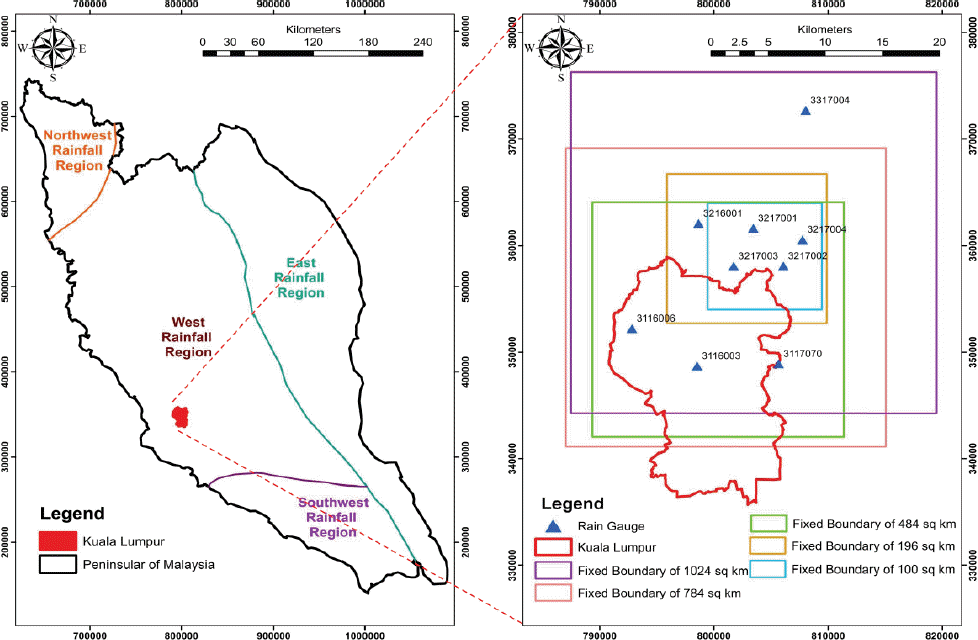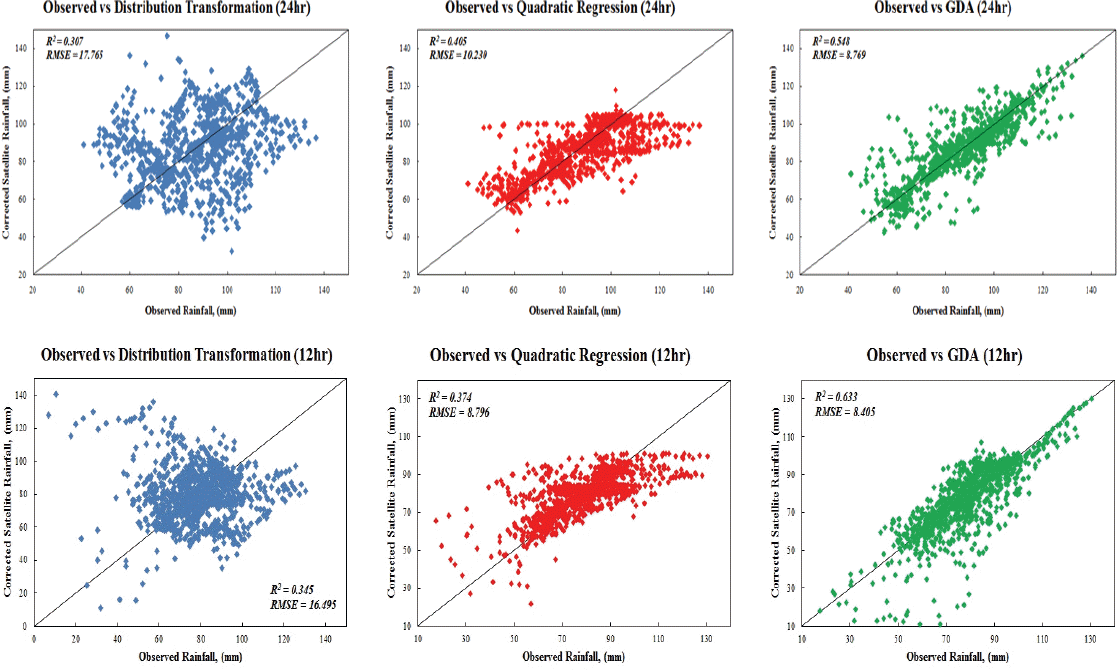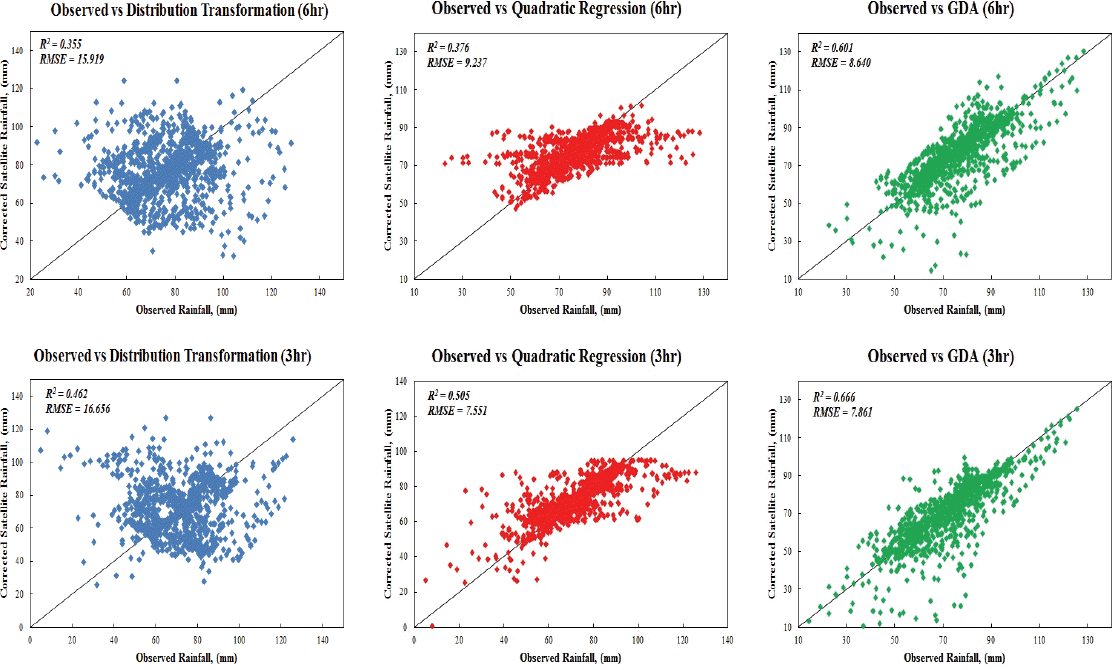Alexander, W.J.R (1990).
Flood Hydrology for Southern Africa. South African National Committee on Large Dams (SANCOLD), Pretoria.

Alexander, W.J.R (2001).
Flood Risk Reduction Measures: Incorporating Flood Hydrology for Southern Africa. Department of Civil and Biosystems Engineering, University of Pretoria.

Asquith, W.H, and Famiglietti, J.S (2000) Precipitation Areal Reduction Factor Estimation using an Annual Maxima Centered Approach.
Journal of Hydrology, Vol. 230, No. 1-2, pp. 55-69. 10.1016/S0022-1694(00)00170-0.

Bacchi, B, and Ranzi, R (1996) On the Derivation of the Areal Reduction Factor of Storms.
Atmospheric Research, Vol. 42, No. 1-4, pp. 123-135. 10.1016/0169-8095(95)00058-5.

Baik, J.J, Park, J.M, Ryu, D.R, and Choi, M.H (2016) Geospatial Blending to Improve Spatial Mapping of Precipitation with High Spatial Resolution by Merging Satellite-based and Ground-based Data.
Hydrol. Process, Vol. 30, No. 16, pp. 2789-2803 doi:10.1002/hyp.10786.

Bengtsson, L, and Niemczynowicz, J (1986) Areal Reduction Factors from Rain Movement.
Hydrology Research, Vol. 17, No. 2, pp. 65-82.

Bouwer, L.M, Aerts, J.C.J.H, Van de Coterlet, G.M, Van de Giessen, N, Gieske, A, and Mannaerts, C (2004). Evaluating Downscaling Methods for Preparing Global Circulation Model (GCM) Data for Hydrological Impact Modelling.
Climate Change in Contrasting River Basins: Adaptation Strategies for Water, Food and Environment Chapter 2. In: Aerts J.C.J.H, Droogers P, eds. Cabi Press, Wallingford, UK: p 25-47. 10.1079/9780851998350.0025.

Cheema, M.J.M, and Bastiaanssen, W.G.M (2012) Local Calibration of Remotely Sensed Rainfall from the TRMM Satellite for Different Periods and Spatial Scales in the Indus Basin.
International Journal of Remote Sensing, Vol. 33, No. 8, pp. 2603-2627. 10.1080/01431161.2011.617397.

De Michele, C, Kottegoda, N.T, and Rosso, R (2001) The Derivation of Areal Reduction Factor of Storm Rainfall from Its Scaling Properties.
Water Resources Research, Vol. 37, No. 12, pp. 3247-3252. 10.1029/2001WR000346.

Department of Irrigation and Drainage (DID) (1986).
Variation of Rainfall with Area in Peninsular Malaysia. Water Resources Publication No.17.

Dinku, T, Hailemariam, K, Maidment, R, Tarnavsky, E, and Connor, S (2014) Combined Use of Satellite Estimates and Rain Gauge Observations to Generate High-quality Historical Rainfall Time Series over Ethiopia.
Int. J. Climatol, Vol. 34, No. 7, pp. 2489-2504 doi:10.1002/joc.3855. 10.1002/joc.3855.

Getis, A, and Ord, J.K (1992) The Analysis of Spatial Association by Use of Distance Statistics.
Geographical Analysis, Vol. 24, No. 3, pp. 189-206. 10.1111/j.1538-4632.1992.tb00261.x.

Kidd, C, and Huffman, G (2011) Global Precipitation Measurement.
Meteorol. Appl, Vol. 18, No. 3, pp. 334-353 doi:10.1002/met.284. 10.1002/met.284.

Kok, K.H, Yu, W.S, Lariyah, M.S, and Jung, K.S (2017) Derivation of Areal Reduction Factor for Storm Design Application in Malaysia using Grid-based Approaches.
E-proceedings of the 37th IAHR World Congress.

Laurent, L, Audois, P, Marie-Joseph, I, Becker, M, and Seyler, F (2013) Calibration of TRMM 3B42 with Geographical Differential Analysis over North Amazonia.
Geoscience and Remote Sensing Symposium (IGARSS), 2013 IEEE International, pp. 2234-2237. 10.1109/IGARSS.2013.6723261.

Lim, J.T, and Azizan, A.S (2004).
Weather and Climate of Malaysia. University of Malaya Press, Kuala Lumpur.

Manz, B, Buytaert, W, Zulkafli, Z, Lavado, W, Willems, B, Robles, L. A, and Rodríguez-Sánchez, J. P (2016) High-resolution Satellite-gauge Merged Precipitation Climatologies of the Tropical Andes.
J. Geophys Res. Atmos, Vol. 121, No. 3, pp. 1190-1207 doi:10.1002/2015JD023788. 10.1002/2015JD023788.

National Hydraulic Research Institute of Malaysia (NAHRIM) (2010).
Estimation of Design Rainstorm in Peninsular Malaysia. Review and Updated the Hydrological Procedure No.1.

NERC (Natural Environment Research Council) (1975).
Flood Studies Report. NERC, Swindon, UK.

Omolayo, A.S (1993) On the Transposition of Areal Reduction Factors for Rainfall Frequency Estimation.
Journal of Hydrology, Vol. 145, No. 1-2, pp. 191-205. 10.1016/0022-1694(93)90227-Z.

Opten Noort, T.H, and Stephenson, D (1982).
Flood Peak Calculation in South Africa. Water Systems Research Program Report No. 2. University of the Witwatersrand, Johannesburg.

Pietersen, J.P.J, Gericke, O.J, Smithers, J.C, and Woyessa, Y.E (2015) Review of Current Methods for Estimating Areal Reduction Factors Applied to South African Design Point Rainfall and Preliminary Identification of New Methods.
Journal of the South African Institution of Civil Engineering, Vol. 57, No. 1, pp. 16-30. 10.17159/2309-8775/2015/v57n1a2.

Sivapalan, M, and Blöschl, G (1998) Transformation of Point Rainfall to Areal Rainfall: Intensity-duration-frequency curves.
Journal of Hydrology, Vol. 204, No. 1-4, pp. 150-167. 10.1016/S0022-1694(97)00117-0.

Suhaila, J, Deni, S.M, Wan Zin, W.Z, and Jemain, A.A (2010) Spatial Patterns and Trends of Daily Rainfall Regime in Peninsular Malaysia during the southwest and Northeast Monsoons: 1975-2004.
Meteorology and Atmospheric Physics, Vol. 110, No. 1-2, pp. 1-18. 10.1007/s00703-010-0108-6.

Svensson, C, and Jones, D.A (2010) Review of Methods for Deriving Areal Reduction Factors.
Journal of Flood Risk Management, Vol. 3, No. 3, pp. 232-245. 10.1111/j.1753-318X.2010.01075.x.

USWB, United States Weather Bureau (1957).
Rainfall Intensity-frequency Regime, Part 1: the Ohio Valley Technical Paper 29. United States Department of Commerce, Washington DC.














